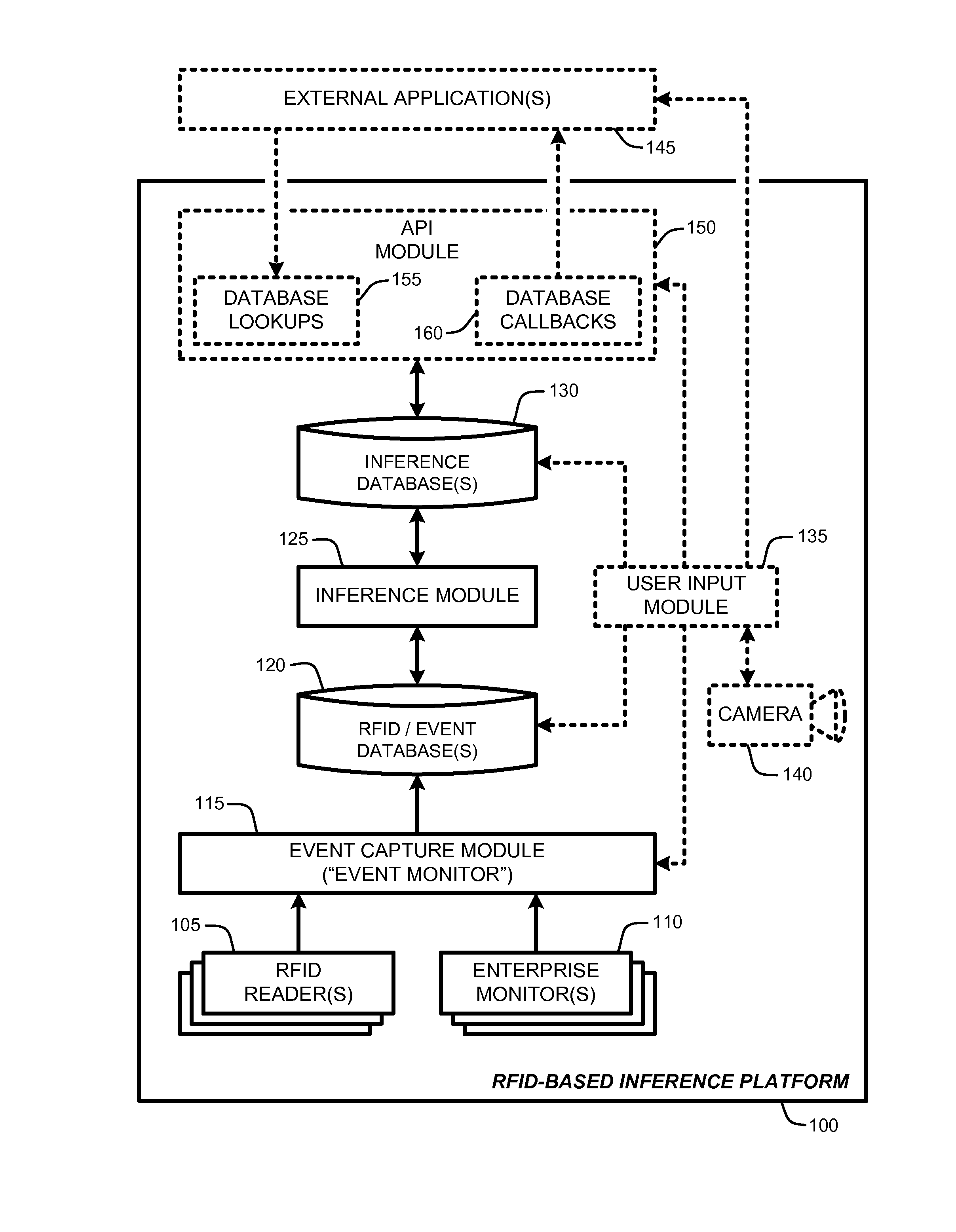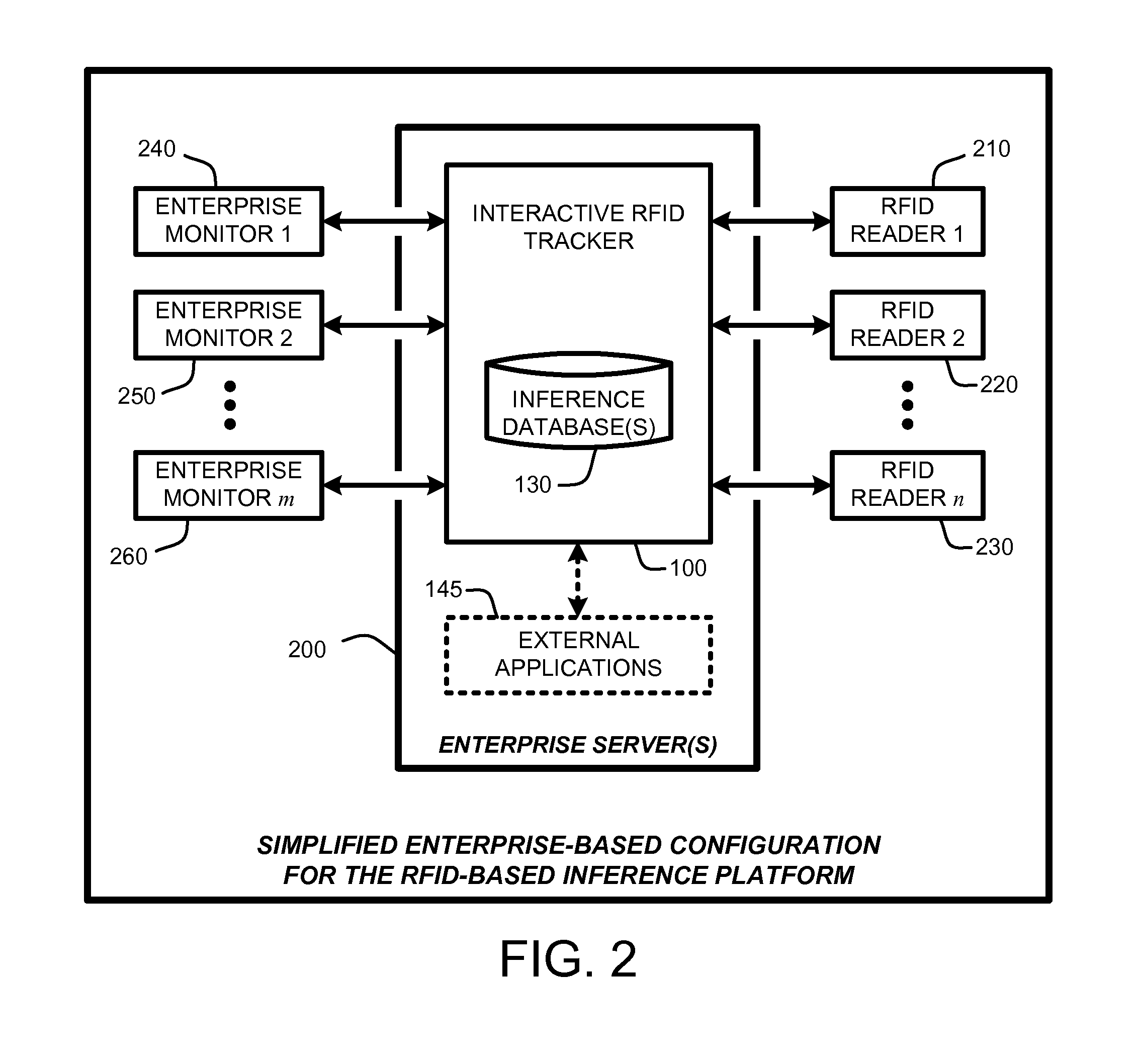Rfid-based enterprise intelligence
a technology of enterprise intelligence and inference platform, applied in the field of rfid-based inference platform, can solve the problems of robustness and scalability problems of vision based inference techniques, difficult to use response rate for detection, and customizing rfid tags or devices, etc., to achieve the effect of reducing costs
- Summary
- Abstract
- Description
- Claims
- Application Information
AI Technical Summary
Benefits of technology
Problems solved by technology
Method used
Image
Examples
Embodiment Construction
[0025]In the following description of the embodiments of the claimed subject matter, reference is made to the accompanying drawings, which form a part hereof, and in which is shown by way of illustration specific embodiments in which the claimed subject matter may be practiced. It should be understood that other embodiments may be utilized and structural changes may be made without departing from the scope of the presently claimed subject matter.
[0026]1.0 Introduction:
[0027]Note that the following discussion assumes the use of passive RFID tags in order to minimize overall system cost. However, both active and semi-passive RFID tags, and any combination thereof, may also be used. Further, both RFID tags and RFID readers are well known to those skilled in the art and will not be described in detail herein.
[0028]In general, an “RFID-Based Inference Platform,” as described herein, provides various techniques that use response from RFID tags for automatically inferring interactions betw...
PUM
 Login to View More
Login to View More Abstract
Description
Claims
Application Information
 Login to View More
Login to View More - R&D
- Intellectual Property
- Life Sciences
- Materials
- Tech Scout
- Unparalleled Data Quality
- Higher Quality Content
- 60% Fewer Hallucinations
Browse by: Latest US Patents, China's latest patents, Technical Efficacy Thesaurus, Application Domain, Technology Topic, Popular Technical Reports.
© 2025 PatSnap. All rights reserved.Legal|Privacy policy|Modern Slavery Act Transparency Statement|Sitemap|About US| Contact US: help@patsnap.com



